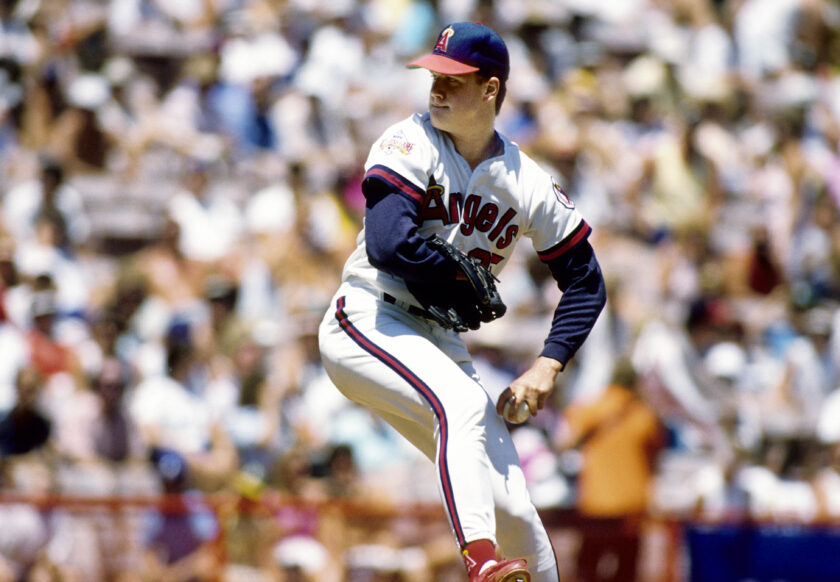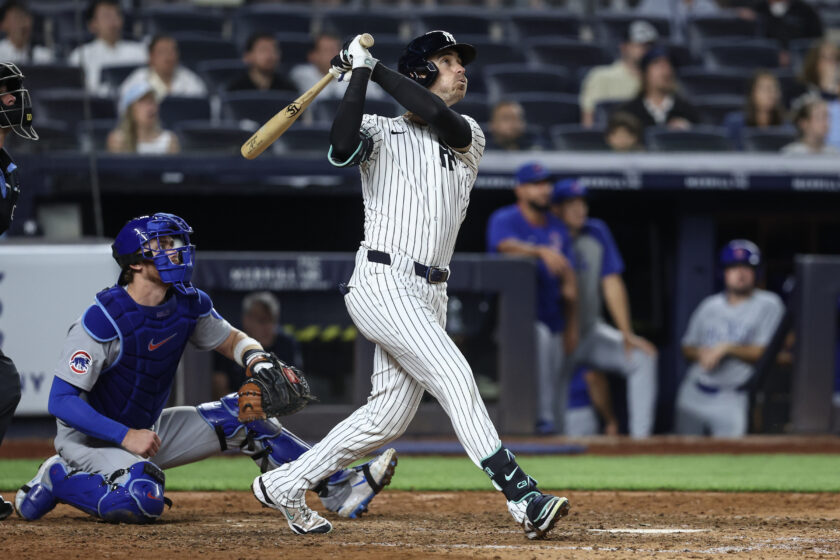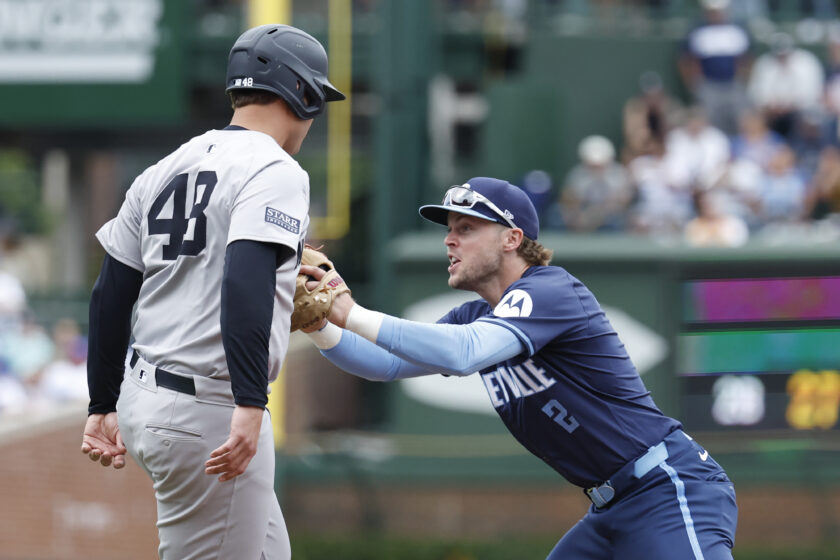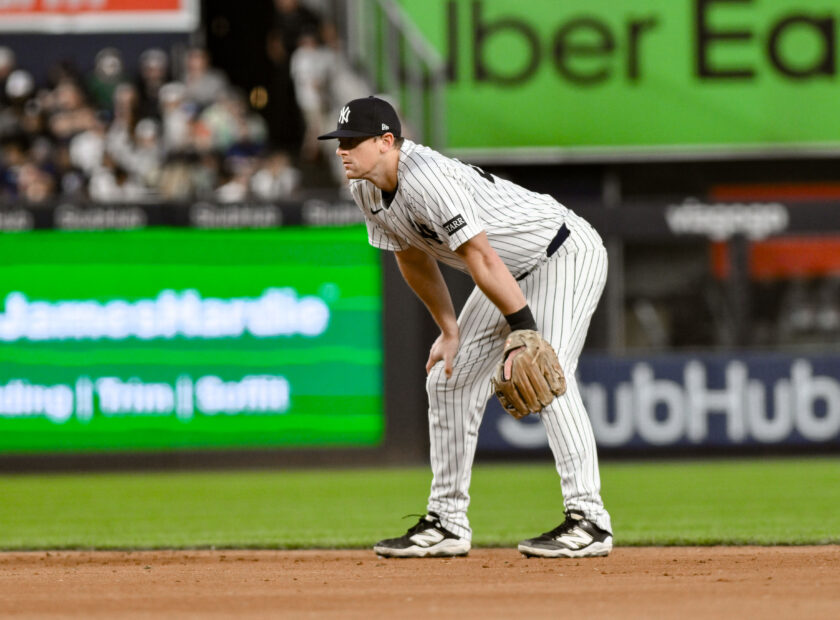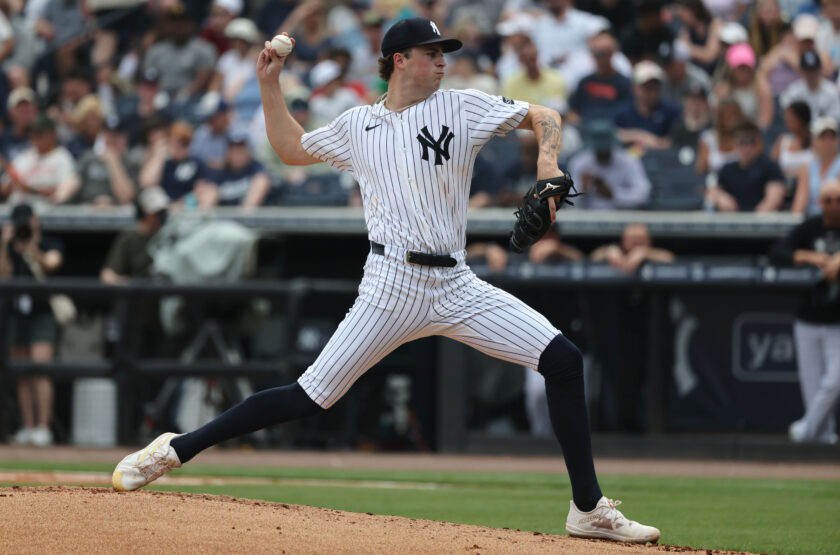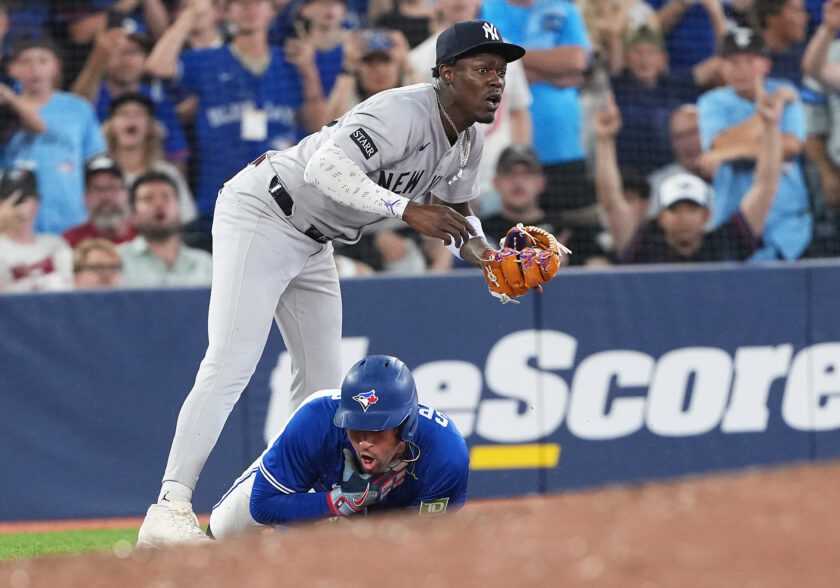New York Yankees: Luis Severino To Bullpen Shouldn’t Be Unwelcomed
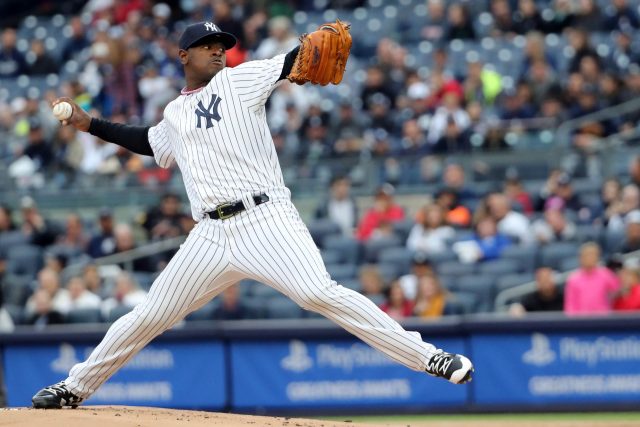
New York Yankees’ young phenom Luis Severino was sensational in the bullpen in 2016, but why is moving him there so frowned upon?
[dropcap]S[/dropcap]ometimes, all it takes for a major league ballplayer to tap into their potential or even vastly progress is a mere change of scenery.We saw that when the New York Yankees dealt Ivan Nova to Pittsburgh (3.06 ERA), watched Phil Hughes leave for Minnesota (finished seventh in CY Young voting), when Ichiro came over from Seattle in 2012 (.322 BA), and much much more.
[sc name=”Yankees Link Related” link=”elitesportsny.com/2016/11/10/new-york-yankees-james-kaprielian-continues-to-look-sharp-in-return/” text=”James Kaprielian Continues To Look Sharp In Return” ]
For their young hurler Luis Severino, however, all it took to showcase his immense electricity was an assignment change.
Coming off his rookie season in which he went 5-3 with a 2.89 earned run average in 11 starts, Severino was plainly unable to satisfy any of the asinine expectations that were set on him.
Across the same amount of starts (11) in his sophomore season, the 22-year old went 0-8 with an 8.50 ERA while serving up 11 home runs and 70 hits in 47.2 innings of work. His K/9 ratio also declined from 8.1 to 7.7 while his opponent’s batting average spiked from .229 to .337.
Then, after a couple demotions, manager Joe Girardi decided to throw the youngster into the bullpen — where he may have commenced his legacy as a dominant reliever.
In 23.1 innings of relief starting on July 27 against the Houston Astros, he has held opponents to a .105/.209/.158 slash line while maintaining a 0.39 ERA and striking out 25.
More impressively, his strikeout-per-nine ratio sat at 9.6 out of the ‘pen while his rate, as previously mentioned, was 7.7 as a starter. Additionally, he did not surrender a single home run while teams totaled just 12 total bases off him.

There are a few reasons, found by just analyzing his outings, on why Severino is so filthy while coming out of the bullpen.
In relief, the kid has to go face-to-face with hitters only once. His slider and changeup are not celestial enough to “fool” major league batters twice, yet.
When batters face Severino (in his career as a starting pitcher) for the first time in a game, they slash .257/.333/.449 but come the second plate appearance, that line spikes to .319/.373/.540.
According to Brook’s Baseball, batters hit .237 off Severino’s fastball, .182 off his changeup, and .135 off of his slider when facing him for the first time in 2016.
For the third (or more) time, batters hit .278 off Severino’s fastball, .500 off his changeup, and .313 off his slider.

Above any numbers, Severino benefited exceptionally by coming in for an inning or two and letting his electric fastball fly with a little increase of adrenaline.
Now, when pitchers and catchers report to George M. Steinbrenner field on Feb. 13, Severino will likely enter camp as a starter for a few reasons.
One of them is that he has tasted success as a starter at the highest level, therefore he should earn a chance to earn that spot back. Well, back in his first cup of coffee he let up nine home runs in 11 starts, just two fewer than he gave up in the same amount this season as a starter while he walked more.
The argument there is it’s quite evident that the league figured him out as a starter. Unless he develops his changeup, which he only threw 9.69 percent of the time a year ago, his fastball won’t clean up the flaws in his arsenal on a consistent basis. [sc name=”Yankees Center Right” ]
Another argument that stands out is the fact that he is a mere 22-years old and there is a reason why he was once a top tier prospect.
Sometimes, it takes pitchers a little longer to figure life in the major leagues out. Look to Clayton Kershaw, Jake Arrieta, Rick Porcello and many others.
Just because a 21-year old comes up and doesn’t perform to the hype he carried with him, doesn’t mean you give up on him. On the other hand, when someone’s arsenal lacks the basic foundation to build a successful starter in the pros, that’s when you sit back and look at the big picture.
The difference between Severino and the Kershaws and the Arrietas of the world is that those established CY Young award winners have five or six pitches they go to on a batter-by-batter basis.
Severino’s fastball is smoking fast and at electric 97 mph, it perfectly cleans up his slider which is actually thrown hard as well but being the only two pitches he goes to, there is no guarantee that his sophomore slump is a fluke.
Even if the development of his changeup, which generates few swings and misses, comes, there is convincing reason to believe that his arsenal simply isn’t good enough to develop into what he was forecasted to be: an ace.
Is this bad? Absolutely not. In fact, this should be encouraged based on those who converted from failed starter into a flawless reliever.
Exhibit one: Mariano Rivera.
[sc name=”Yankees Center” ]
Entering the 1995 season, Baseball America ranked him as the ninth Yankees’ prospect and began the year in Triple-A Columbus.
In 30 innings, he maintained a 2.10 ERA with a 10.00 strikeout-to-walk ratio (30 K’s, 3 BB) but struggled when promoted to the major leagues (5.51 ERA, 1.70 K/BB ratio).
Like Severino, Mo used a mix of a slider and change-up and to complement his fastball, which was in the mid-90’s. In 1996, New York moved him to the bullpen after just 10 starts despite a stint of superiority (2.52 ERA from Jul 4 to Jul 26, 1995).
In the bullpen full-time by 1996, Rivera maintained a 2.09 ERA in 107 innings while setting up for closer John Wetteland and maintained a strikeout rate of 10.9. One year later, he took over as the closer and the rest was history.
Andrew Miller also spent a long time as a starter before turning into the game’s contemporary best reliever. So did Dellin Betances, Rafael Soriano, Aroldis Chapman, Zach Britton, Wade Davis, Jonathan Papelbon….. You get the point.[sc name=”Yankees Fanatics Right” ]
No one would say any of those just listed are players who have had a bad career now, would they?
Velocity habitually soars when you go from starting to relieving and when that happens, you get a remarkable variation among the fastball and the off-speed pitches.
You don’t have to concern yourself with “saving” energy, setting hitters up, or even facing them more than once. Severino may be young, but everything from his approach, arsenal, and attitude that shrieks “I’m a reliever.”
There is nothing wrong with accepting that, especially when it’s apparent that Severino is better suited there and pitchers in a similar boat have a historic track record of being successful.
[sc name=”Yankees Link Next” link=elitesportsny.com/2016/11/10/jacoby-ellsbury-is-new-york-yankees-biggest-x-factor/” text=”Jacoby Ellsbury Is The New York Yankees’ Biggest X-Factor” ]
Christian Kouroupakis covers the New York Yankees and is the Editorial Director for ESNY. Interact with him and view his daily work by “liking” his facebook page and follow him on Twitter. All statistics are courtesy of Baseball Reference.com unless otherwise noted. Don’t hesitate to shoot him an email with any questions, criticisms, or concerns.

